Wahoo Powrlink Zero and Wahoo Kickr Rollr trainer launched
All the details, specs and first impressions on Wahoo's all-new Powrlink Zero pedals and Kickr Rollr indoor trainer
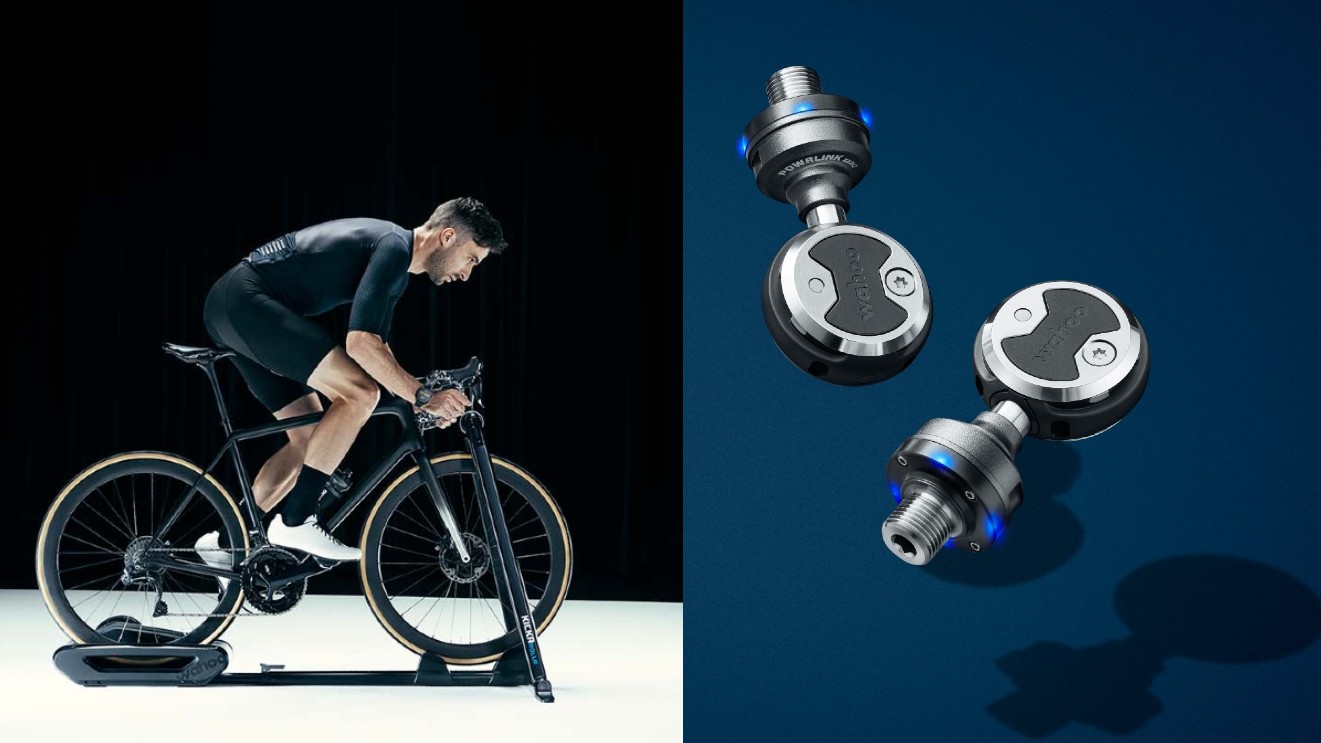

Wahoo has launched two brand new products simultaneously, both of which it says are firsts in their categories. One - a power meter version of its Speedplay pedals - was expected and has been an item of the wishlists of Speedplay users for years. The other, a roller-based smart trainer, is something we weren’t quite so aware of the demand for.
But, says Wahoo, the two are made for each other, and it’s even offering a bundle option so that customers can buy them and use them together.
Let’s first take a look at the Wahoo Powrlink Zero, which will be available in both single-sided and dual-sided options.
Wahoo Powrlink Zero power meter pedals
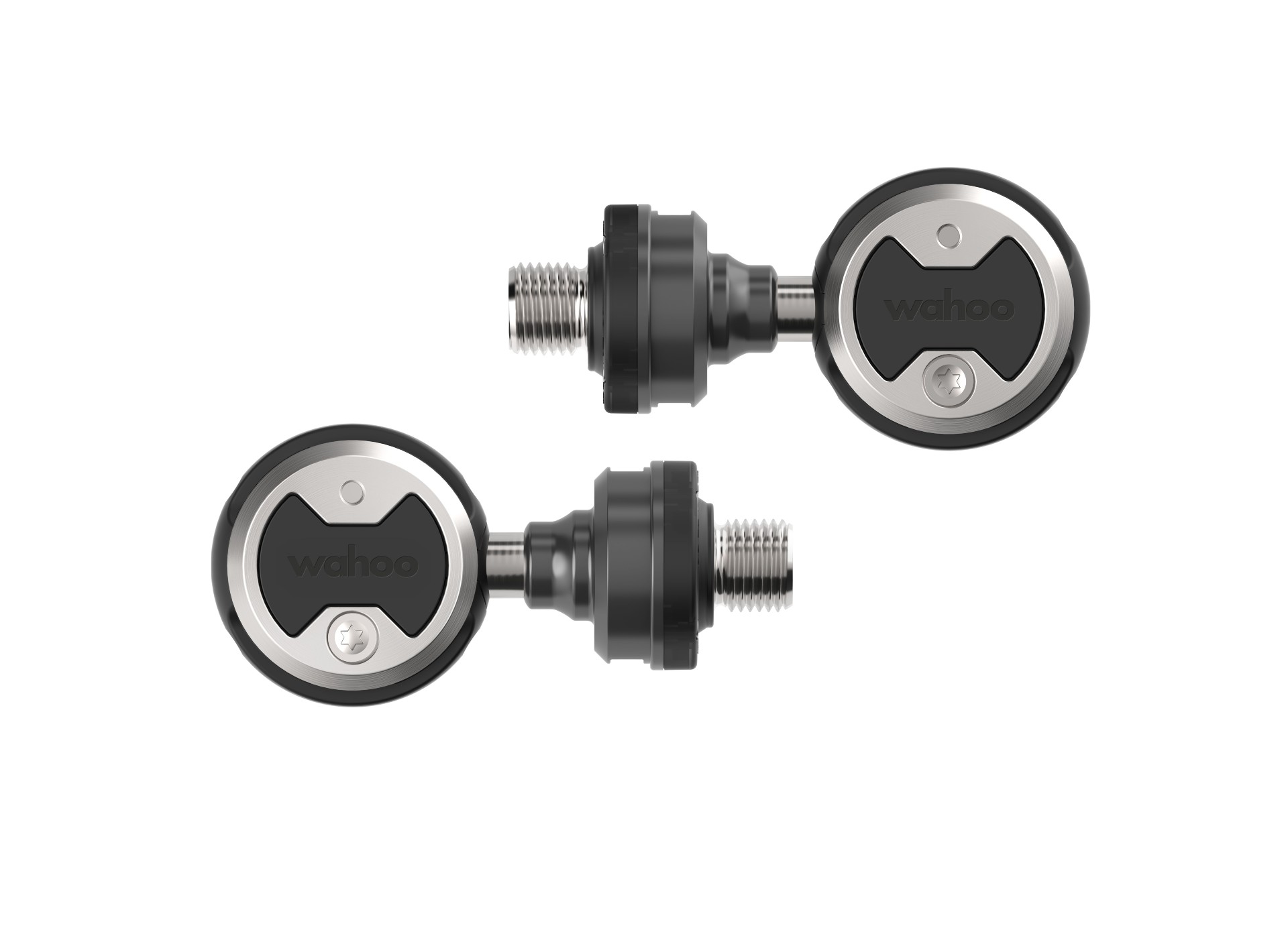
Wahoo acquired Speedplay in 2019 and launched an overhauled, pared back and improved version of the range in March 2021. The Powrlink Zero is built around the Speedplay Zero pedal with its stainless steel spindle and supplies a claimed accuracy of +/-1% with no calibration necessary.
Like rival power meter pedals from Garmin and Favero, the Powrlink Zero calculates cadence data as well as total power, left/right balance. It’s also IPX7 water resistant and oval chainring compatible.
Battery life is a claimed 75 hours of ride time and charging is via an included charging cable - Y-shaped for the dual-sided option to charge both pedals simultaneously.
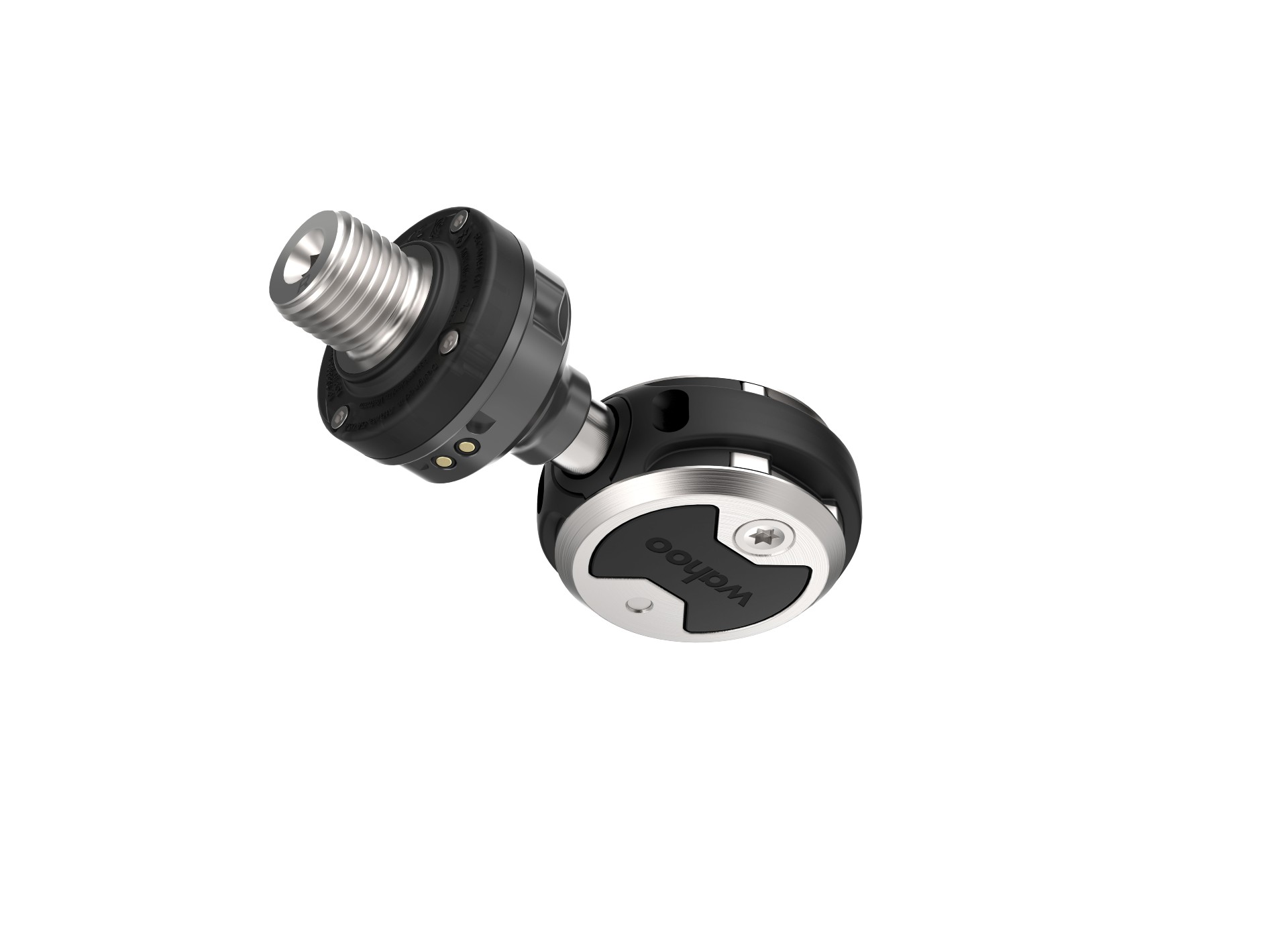
As for connectivity, it’s compatible with ANT+ and Bluetooth devices and third-party apps.
There are LEDs at the base of the spindle to display power, connection and low battery.
The electronics are housed in a pod next to the crankarm, with pedals fitted and removed like non-power meter Wahoo Speedplay pedals using an 8mm Allen key.
The Powrlink Zeros weigh a claimed 276g per pair (or 250g for the left-only measurement) are lighter than the Garmin Rally (road version) and Favero Assiomas, neither of which come in under 300g - but, as with the regular pedals, the cleat assembly which houses the spring mechanism is heavier than Shimano or Look road cleats.
Wahoo has had to slightly increase both the stack height and spindle length in order for the rider’s shoe to clear the pod when engaging and releasing. A thicker pedal takes stack height from the standard Speedplay Zero’s 11.5mm up to 13mm, which is higher than Favero (10.5mm) and Garmin Rally (12.2mm). A longer spindle length for the Powrlink Zero (55mm compared to 53mm for the standard Speedplay Zero) increases Q factor slightly. The Garmin pedals stick with 53mm while Assioma measures 54mm, though the Assioma, with a Shimano style platform, measures 64mm - a much greater deviation from standard issue.
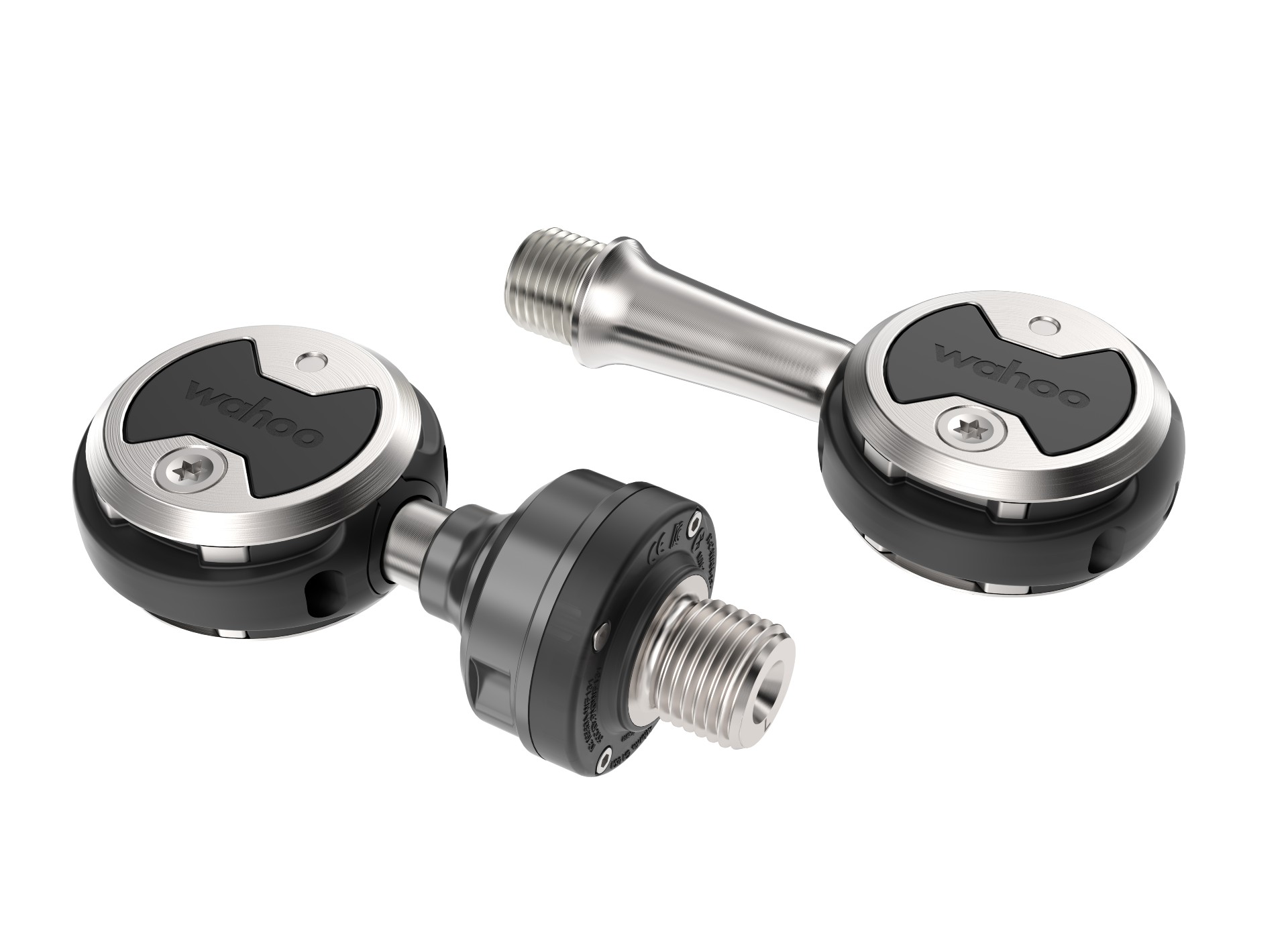
As for pricing, the single-sided Powrlink Zero will retail at £549.99/$649.99 which is on a par with the single-sided Garmin Rally RS/RK100 (£579.99) but more expensive than the Favero Assioma Uno (£449).
The dual-sided Powrlink Zero has an RRP of £849.99/$999.99 (compared to £969.99 for the Garmin Rally RS/RK200 and £699 for the Assioma Duo)
Wahoo says the Powrlink Zero is already being used by Ironman 70.3 world champion Lucy Charles-Barclay and the Le Col Wahoo women’s pro road team, who will use it in the upcoming Spring Classics.
Wahoo Powrlink Zero specs
- Weight: 276g dual sided/250g single sided
- Q-factor/stack height: 55mm/13mm
- Connectivity: ANT+ and Bluetooth
- Battery: Rechargeable lithium
- Features: Total power, cadence, temperature, automatic calibration, IPX7 water resistance, LED indicators
- Price: £849.99/$999.99 dual sided/£549.99/$649.99 single sided
Wahoo Kickr Rollr
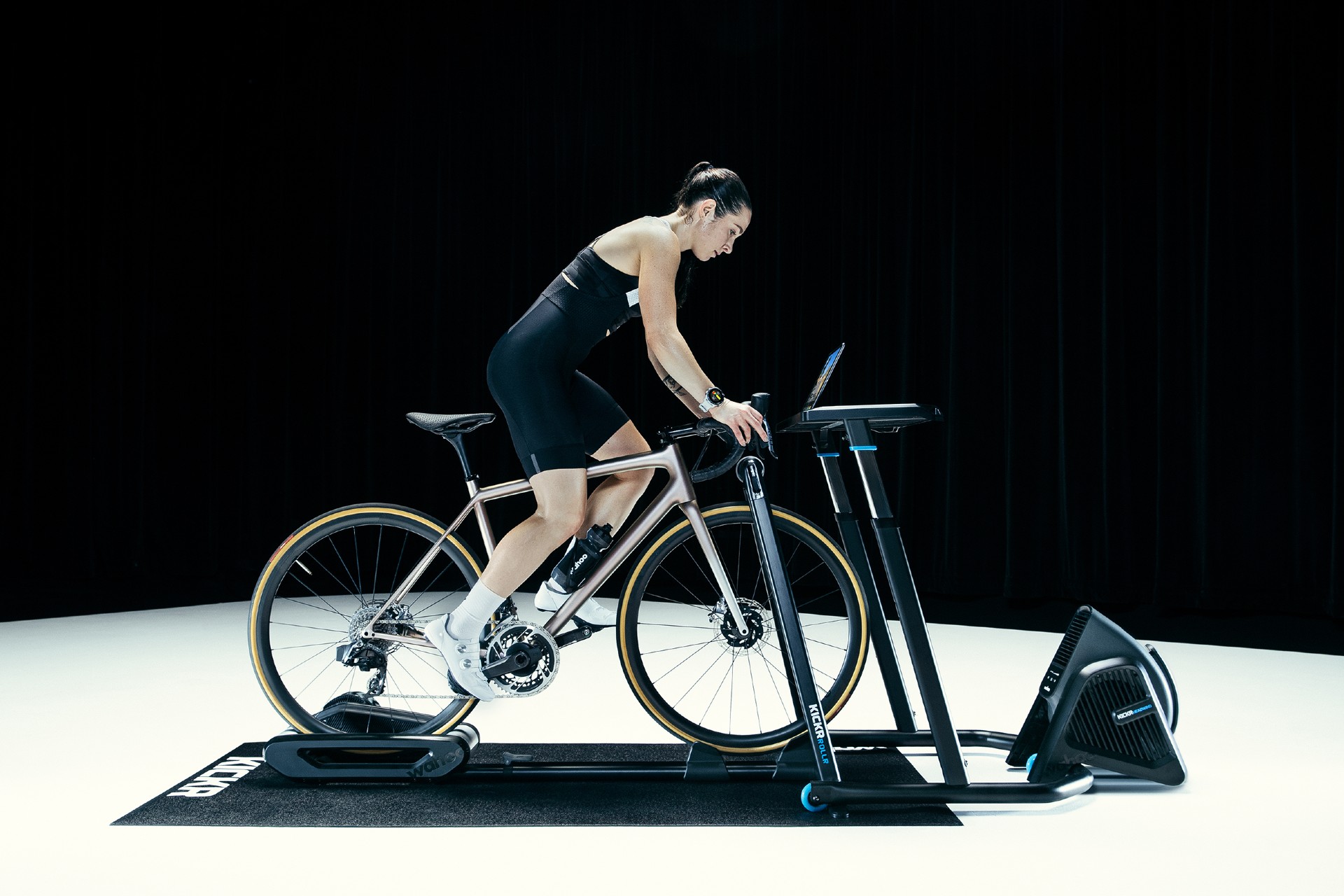
With the Kickr Rollr, Wahoo says it has taken the traditional roller design and reimagined it. Why and how?
The Kickr roller is, in Wahoo’s words, a “smart trainer boasting a dual roller-based design and an impressive set of features that make it a compelling indoor training option for those who want the convenience and natural ride feel of rollers with the benefits of controlled resistance and connectivity.”
Given that Wahoo is also a manufacturer of direct drive smart trainers it would be unwise to criticise them, but what it does say is that the Kickr Rollr is “designed to accommodate a wide range of frame and tyre sizes via a quick-release adjustable wheelbase clamp…easy to take bikes on and off, making it ideal for those athletes who want to quickly transition from indoor training to riding outside, as well as for households where multiple riders use the same trainer.”
Also, since you don’t need to remove wheels, Wahoo says the Kickr Rollr makes the ideal warm-up platform before events or big training sessions. It does weigh 22.6kg though, so is arguably not the most transportable, and is only compatible with 700c wheels.
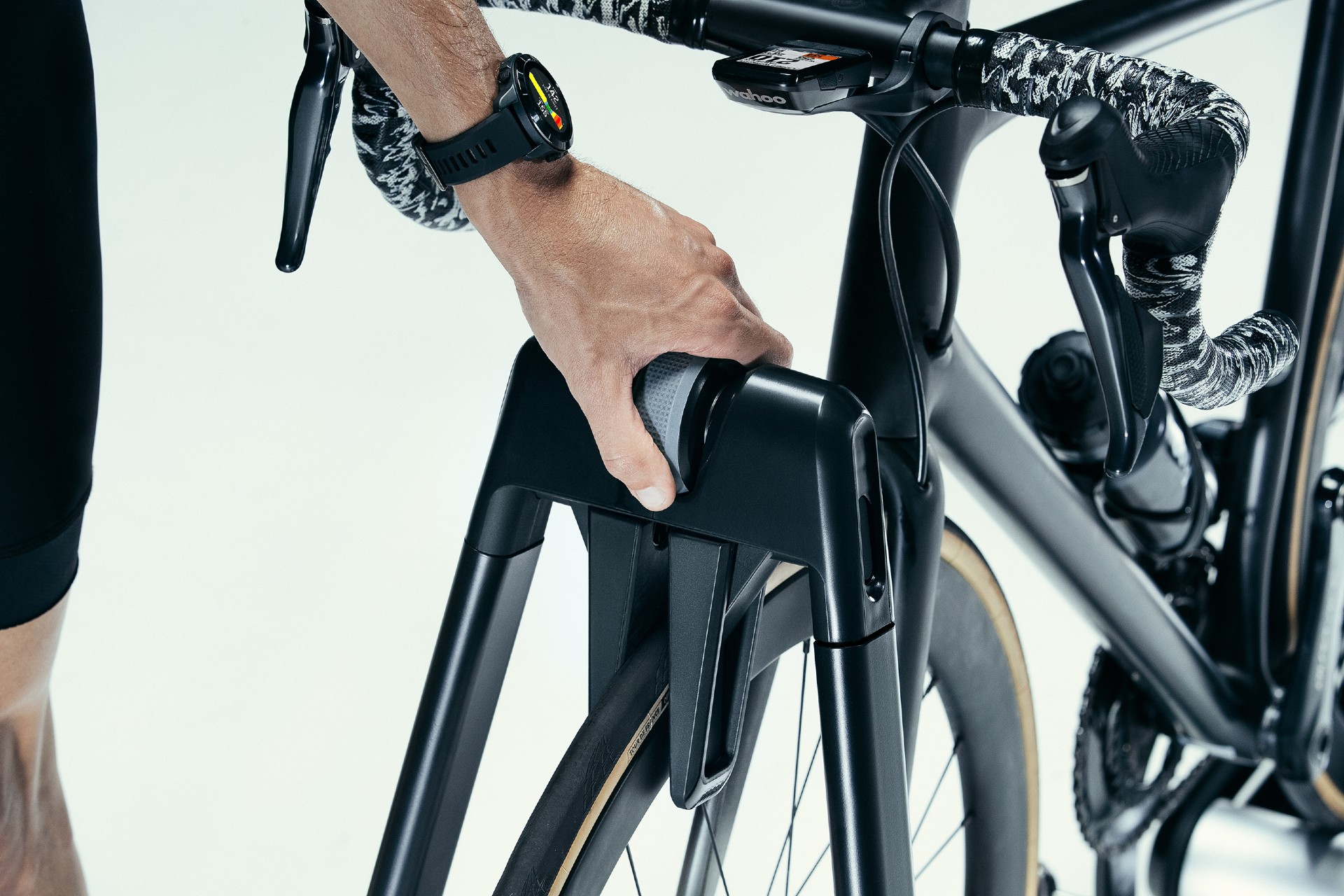
The requirement to be able to ride traditional rollers is eliminated by a clamp that holds and supports the front wheel so that, in Wahoo’s words, even the most balance-challenged cyclists can experience the natural feel of rollers. The Rollr’s ‘safety tire gripper’ can secure tyres up to 2.1in/53mm and this, says Wahoo, makes getting on and off the bike surprisingly easy, while also providing a stable platform for even the biggest out-of-the-saddle efforts.
The Kickr Rollr is ‘smart’, but for the actual power measurement and controllable resistance (up to 1,500 watts) it has to be connected with a bike-mounted ANT+ power meter - such as the Wahoo Powrlink Zero, which is why the two are launching together and why Wahoo is offering both the Kickr Rollr and Powrlink Zero in a bundle. Or, as Wahoo says, the Kickr Rollr works with any ANT+ power meter.
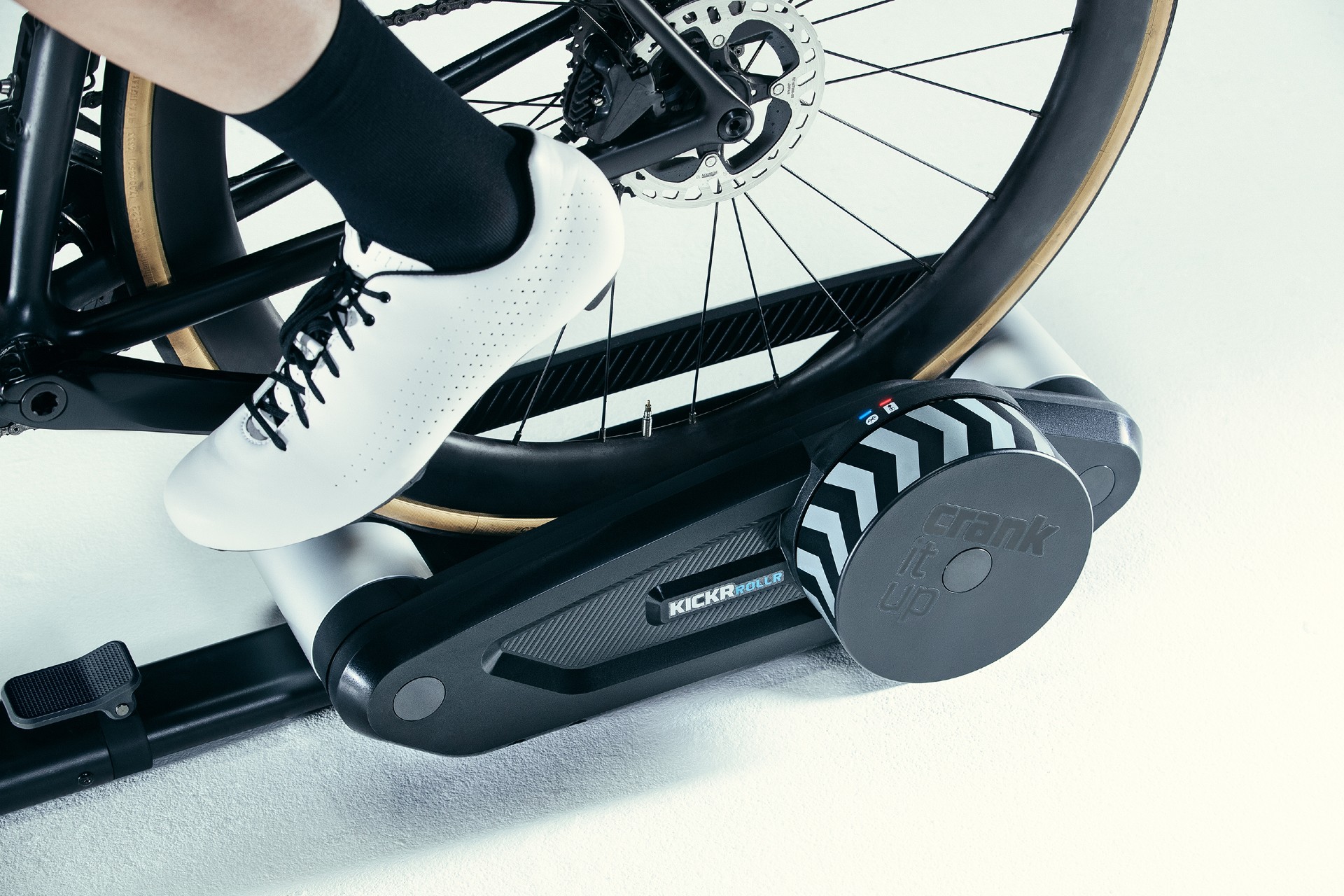
The reason for this is that since the rear wheel on the rollers can slide laterally, power measurement from the rollers wouldn’t be accurate.
If it’s not connected to a power meter the Kickr Rollr supplies a progressive resistance in line with wheel speed.
The Kickr Rollr might not be the easiest thing to make sense of at a glance (watch this space for our full review), but the idea of using the same power meter for both outdoor and indoor training is definitely a sensible one.
The price of the Wahoo Kickr Rollr is £699.99/$799.99; bundled with the Powerlink Zero left-only system £1,199.99/$1,399.00. There’s no dual-sided pedal bundle option.
The Kickr Rollr looks intriguing. Wahoo is clearly aiming to create for cycling the equivalent of a running treadmill, something that you can just put your bike onto and ride. Could Wahoo be about to do a Steve Jobs and give us something we didn’t know we wanted until it arrived?
Wahoo Kickr Rollr specs
- Rear wheel size: 700c road
- Max Power: 1500 Watts
- Dimensions: 101 cm x 28 cm
- Weight: 22.6 kg
- Resistance type: Electromagnetic
- Power requirements: 100-240V~1.5A 50-60 Hz
- RRP: £699.99/$799.99
Wahoo Kickr Rollr: first ride
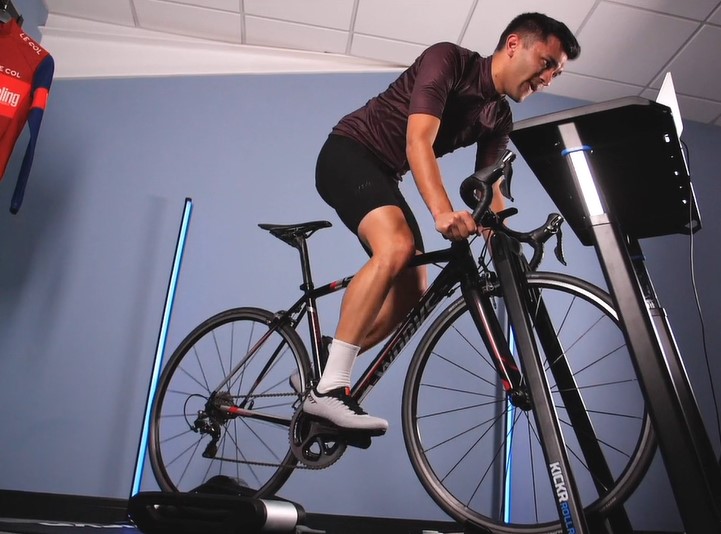
Cycling Weekly's video manager Sam Gupta shot an unboxing/first ride video with the Wahoo Kickr Rollr, which is scheduled to go live on our YouTube channel on March 2. Here are his first impressions.
How easy is the Wahoo Kickr Rollr to set up?
You get the box, take the lid off and you’re presented with essentially two parts: the A frame and the rollers section. Setup literally took five minutes - it is the quickest thing.
When it comes to wheelbase adjustment, there's a little lever which you release that then allows you to slide those two parts together. If you put the bike on there it will just fall into place.
Put the A-frame as close to the head tube as possible and then tighten the front wheel down and you'll be pretty rock solid. The front wheel is clamped from above and below and it's super adjustable for wheel and tyre width: it can be as wide or as tight as you need it to be.
What does the Kickr Rollr feel like to ride?
You have that movement on the back wheel. With a direct-drive Kickr you're completely locked in but with the Rollr it's nice having that little bit of sway at the back and it does make it feel a lot more natural. I did a couple of out-of-the saddle efforts and again they just felt natural. You can feel the bars move since they’re not locked in place - you get the lateral movement of the front wheel and you can see the forks moving side to side. It was also quite nice feeling the bounciness of the tyre on the roller and that enhances the ride feel.
Was there any rear wheel slippage?
This was something I was thinking might happen and when I was doing out-of-the saddle efforts and was very far forward on the bike and pushing forwards you almost wonder if the back wheel is going to lift up: it never did, I never got slip either and I think that's because there was consistent weight going through the bike and the rollers could always keep up with it.
How easy was it to pair the Kickr Rollr with a power meter and a third-party app?
Pairing it was super simple - it paired before I had even noticed that it had. When we shot the video I had RGT on my laptop from a previous shoot so I just used that and it was completely straightforward.
What did the resistance feel like?
The resistance worked as expected and it was super smooth. Without the power meter it did feel like a mid-range sort of resistance, linear, and obviously when you're using your gears you can make things easier or harder.
How noisy was it?
It was fairly quiet. I wouldn't say it was any quieter or louder than a normal Kickr.
What about transportation and storage?
It’s pretty heavy - the resistance unit [the rollers] is really heavy. Even though the frame does fold flat, if you want to put it away somewhere you can't just stand it on end: you can't stand it on the roller ends and if you stand it on the A-frame end it’s too top heavy. Putting it sideways doesn't work because you’re leaning it against the plastic so it's really something that has to stay flat on the floor. It’s great that you can fold it down and slide it into the back of the car but storage wise once it's on the floor it's on the floor.
Would you buy the Kickr Rollr?
If I already had a power meter and I wanted to save myself £300 or £400 on a power meter-enabled smart trainer then with the Kickr Rollr you've got all of the functionality so it's great way of not having to pay for a power meter twice.
I would say if you buy one power meter - and it doesn’t have to be the Wahoo Powrlink Zero if you’re not a Speedplay user - and the Rollr, you’ve got a decent setup.
I would probably opt for the rollers over the Kickr Core, which costs the same [£699.99/$799.99], because it's quite nice being able to drop the bike straight on and not having to faff about with thru-axles pulling your mech about… when they say it's simple to put it on it really is.
Who is the Kickr Rollr for?
I think this is going to be for people who don't have a trainer already. If they've got a power meter perfect, if they don't, not a bad thing either because they’re saving money over a Kickr.
Final thoughts?
It's about trying to think of it not as a set of rollers but as a cheaper trainer, a cheaper alternative to the Kickr but with all the same functionality. As soon as you got the power number it's as smart as a Kickr but arguably the ride feel is better because you've got that rear wheel side-to-side movement and for people who have multiple bikes - say you've got a gravel bike as well - it would just be super easy to chuck that on as well.

Thank you for reading 20 articles this month* Join now for unlimited access
Enjoy your first month for just £1 / $1 / €1
*Read 5 free articles per month without a subscription

Join now for unlimited access
Try first month for just £1 / $1 / €1
Get The Leadout Newsletter
The latest race content, interviews, features, reviews and expert buying guides, direct to your inbox!
Simon Smythe is a hugely experienced cycling tech writer, who has been writing for Cycling Weekly since 2003. Until recently he was our senior tech writer. In his cycling career Simon has mostly focused on time trialling with a national medal, a few open wins and his club's 30-mile record in his palmares. These days he spends most of his time testing road bikes, or on a tandem doing the school run with his younger son.
-
 Gear up for your best summer of riding – Balfe's Bikes has up to 54% off Bontrager shoes, helmets, lights and much more
Gear up for your best summer of riding – Balfe's Bikes has up to 54% off Bontrager shoes, helmets, lights and much moreSupported It's not just Bontrager, Balfe's has a huge selection of discounted kit from the best cycling brands including Trek, Specialized, Giant and Castelli all with big reductions
By Paul Brett
-
 7-Eleven returns to the peloton for one day only at Liège-Bastogne-Liège
7-Eleven returns to the peloton for one day only at Liège-Bastogne-LiègeUno-X Mobility to rebrand as 7-Eleven for Sunday's Monument to pay tribute to iconic American team from the 1980s
By Tom Thewlis